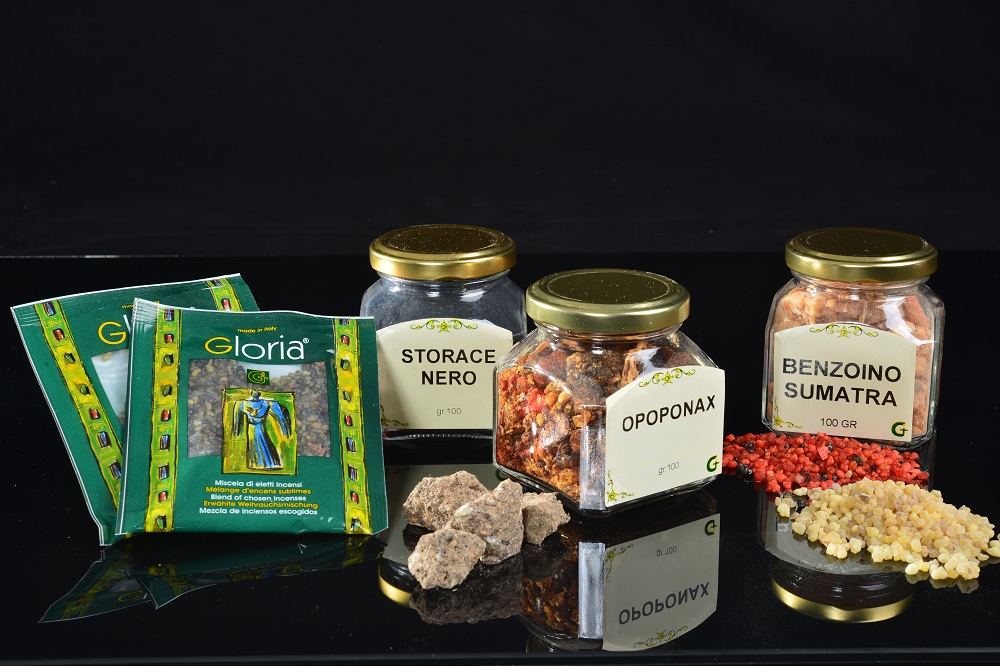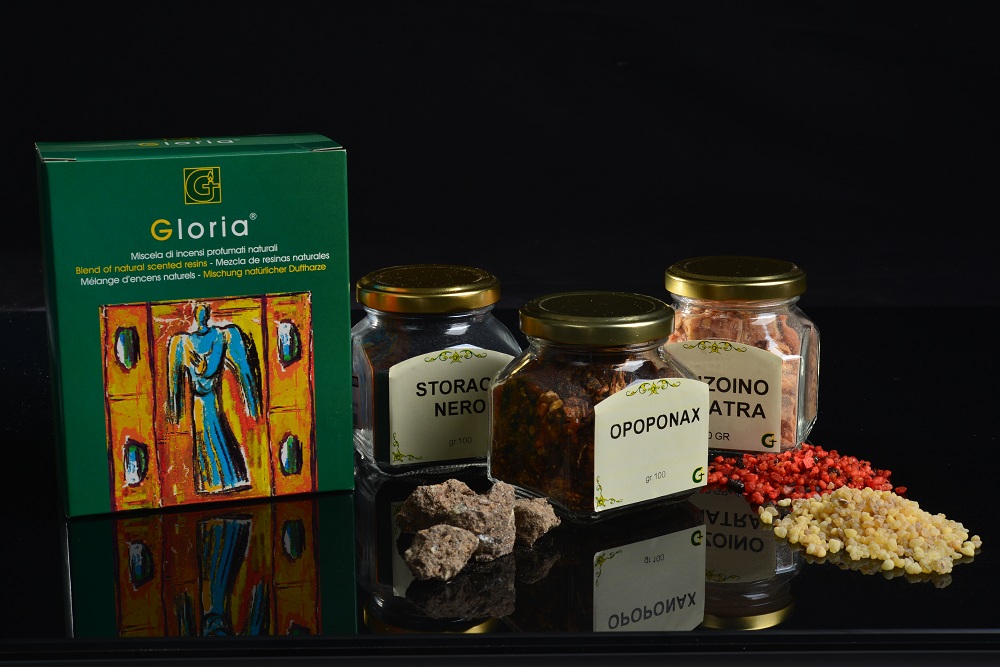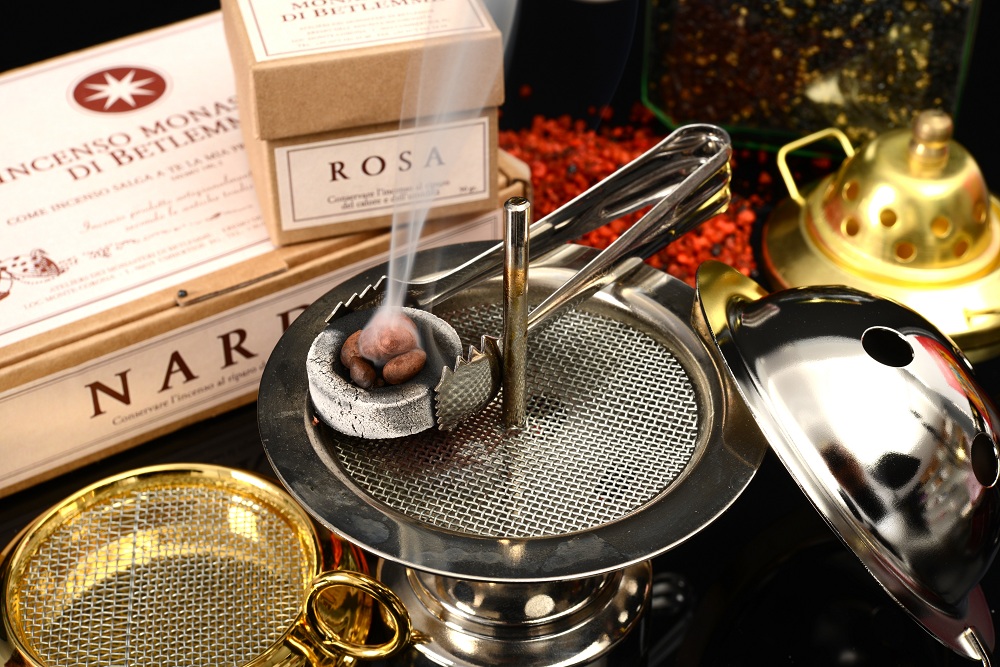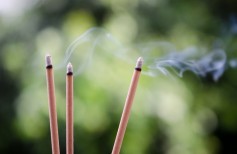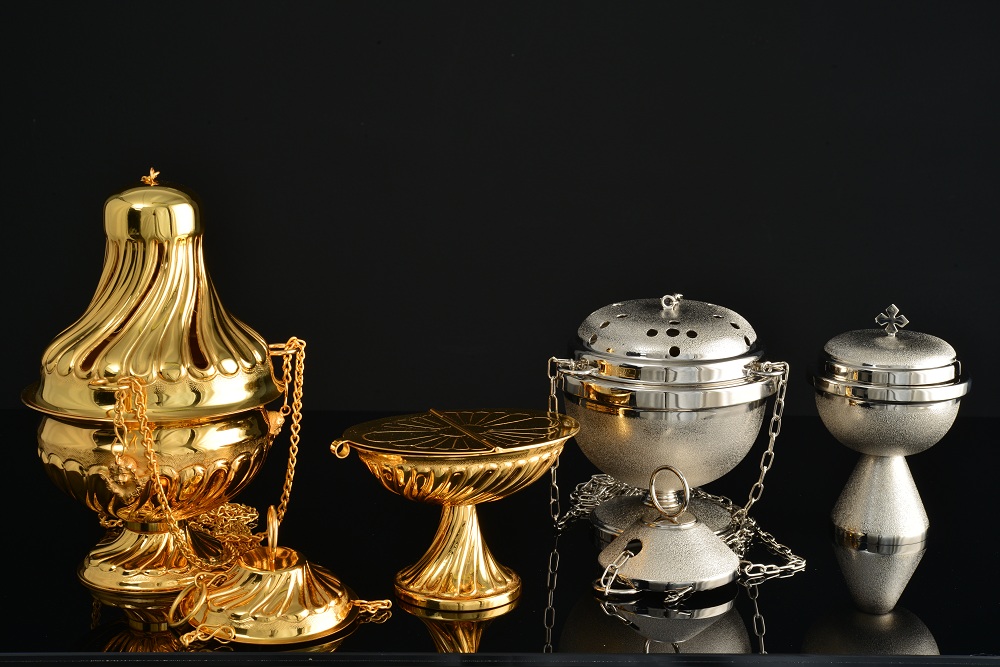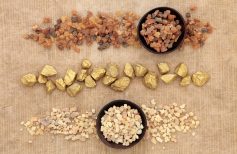Contents [hide]
Incense has always been linked to the idea of the sacred, and the divine. Since the earliest times, its use has been attested in ancient civilizations, almost always for religious purposes. Their intense and aromatic scent was considered to be appreciated by the Gods, as it was by men, and the custom of burning the bark and wood of particularly scented plants has always been widespread.
Incense was burnt during religious celebrations, as well as in houses, to purify them and keep away evil spirits. Its aromatic vapours created a communication channel with the divine, and with the kingdom of the dead.
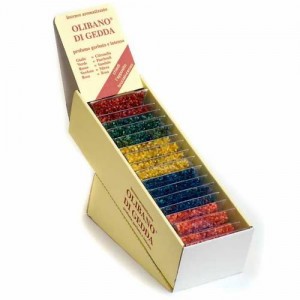
Incenses display box 36 pcs – various fragrances
In addition to religious uses, incense was recognised very early on, particularly in Arab countries, as a precious and useful ingredient in the treatment of many diseases and discomforts.
Even in a Christian context, incense was immediately given enormous consideration. Just think – it appears among the gifts that the Magi brought to Jesus (in reality it appears twice, because Myrrh is nothing but another kind of incense). The Jews used it for fumigation, a practice that allowed them to approach God by burning incense and inhaling the fumes, and so Christians continued to use incense in the Churches, burning it during the ceremonies and sprinkling it onto the faithful, but also to disinfect rooms and purify the air.
It is worth discovering more about this ancient product, which is full of hidden virtues.
Where does incense come from?
The term “incense” generically refers to oleoresins produced by various plants from the Burseraceae family, originating mainly from the Arabian Peninsula and the Horn of Africa, an area located at the edge of the desert, composed mainly of earth and stones, which takes name of the “incense belt”.
In particular, the Boswellia sacra, from which it is obtained, produces the incense oliban, and Commyphora, from which the incense myrrh is produced. The bark of these plants is cut, and the resin that comes out from it is collected. Some plants secrete the resin directly, without needing to be cut. In both cases, the resin is then crystallized: this normally takes a month to harden sufficiently. The collection of resin can be carried out up to 12 times a year, which ensures a constant production to the men who dedicate themselves to it, in arid and rocky areas from which it is difficult to obtain other forms of sustenance. In fact, these plants are capable of growing, even in very barren and less fertile areas, and their leaves offer shade and nourishment to humans and animals. Indeed, too much water would be fatal for the plants that produce incense.
The incense road
The collection and trade in incense has spread since ancient times. All of the civilizations of the Mediterranean basin, as well as those of Asia Minor, and many more to the East, used it, and the demand was such as to give rise to a dense network for commercial traffic. The “Via dell’Incenso“, which has existed since Roman times, connected the Arabian Peninsula with the Mediterranean. The caravans that ran through it carried goods that came from India and the Far East across the sea. In addition to fabrics, precious metals, precious stones, rice, sugar and cereals, and countless other products, merchants brought incense, spices like pepper, nutmeg, cloves and cinnamon, and fragrant essences like sandalwood, musk and camphor. The latter often served as ingredients for pharmacopoeia and were also used in cosmetics.
The Assyrians, Egyptians, Chinese and Indians used incense for both medicinal and devotional purposes. In Egypt it was the basis for a particular type of Kajal, which was used not only to adorn the eyes, but to protect them from infections.
Immersing yourself in the smoke of incense helped combat joint pains and rheumatism, with a powerful anti-inflammatory action.
In India, Guggul incense was used as a remedy in Ayurvedic medicine, to promote sleep and to allay anxiety and nervousness. Also in the context of Ayurveda, incense was used to prepare ointments for sores and skin rashes. It was also burnt as an accompaniment for yoga and meditation.
Traditional Chinese medicine used the technique of fumigation with incense.
Wherever it was used, it was believed that incense purified the internal environment and at the same time kept diseases and evil spirits away. It helped concentration and meditation, allowing one to come into contact with one’s inner self and with the Divine.
How incense is used
How can we use incense in our homes? There are many types of incense on the market, in various forms, and it is not easy to navigate round them. Above all, we must ensure that the incense we buy is pure, and not cut with sand or chemical additives, which distort its quality.
The oldest and most original form used is resin beads.
The incense is burnt on charcoal, which can be lit directly with a lighter or a candle and then placed on a saucer with sand in it, or on a plate incenser. There are also terracotta incense burners, which are used to burn incense charcoals over which beads of incense are then poured. But a simple saucepan or a metal plate filled with sand is also good as a base for burning charcoals. The charcoals last about 40 min. and can be re-ignited.
Alternatively you can use a ‘bruciaresine’, a kind of tripod under which a candle is placed to heat crystals placed in the dish, turning them into aromatic smoke, in a similar way to diffusers for essential oils. Just a few grains of incense are needed at a time, to achieve a pleasant and effective diffusion.
Various types of incense
Besides olibano, or Franchincenso incence obtained from Boswellia sacra, there are different varieties of incense, that have been used in different eras according to their characteristics and properties.
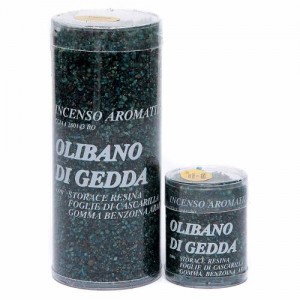
Incense with Myrrh Fragrance
Let’s take a look at just a few:
Myrrh incensex
Even the Myrrh plant grows in the desert. Its name is Mirra Commyphora. Brought as a gift from the Magi to baby Jesus, the incense of Myrrh has always been traded like oliban incense. According to the Egyptians, it proscribed insanity, calmed the spirit and relaxed the nervous. In general, it is considered to be rich in a beneficial and useful energy to combat fatigue and mental confusion.
Benzoin incense
Originally from the Far East, and especially from Indochina, Benzoin incense is the resin extracted from the Benzoe Siam tree. Too intense and irritating on its own, it is usually mixed with cinnamon and sandalwood for a calming effect, or with incense and cedar to elevate the mind and access other spiritual planes. Shakti, a blend obtained from benzoin, has stimulating properties on creativity, love and sensuality
Cedar wood incense
Originally from Mesopotamia, cedar was considered to be the tree of revelations and was associated with the tree of Eden. The fumes of cedar incense brought supernatural suggestions, inner strength and self-esteem, as well as purifying the environment of negative energies.
Ladan incense
Obtained from the Cistus reticus, a resinous shrub, the incense of Ladan originated in the Mediterranean basin, particularly from Crete. It strengthens sensitivity and self-perception, amplifies memories and nurtures the imagination. In general, it helps us to find inner stability and solidity.
Storace incense
A native bush of Mesopotamia that secretes a liquid balsam, Storace was considered to be perfume of feasts, because it infused energy, vigour and sensuality. The aroma of Storace incense is like amber, and is nowadays sold in the form of a “gum”.
Sandalwood incense
This is the wood of the Santalum album tree, originally from eastern India. When burnt, the incense of Sandalwood strengthens vital energies, combats stress and neurosis and is effective against headaches.

